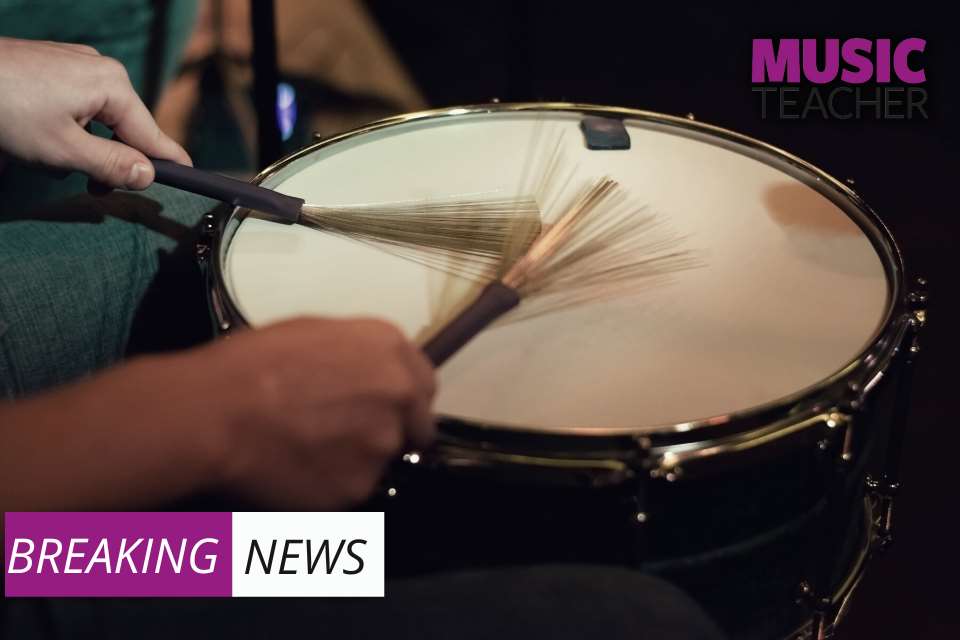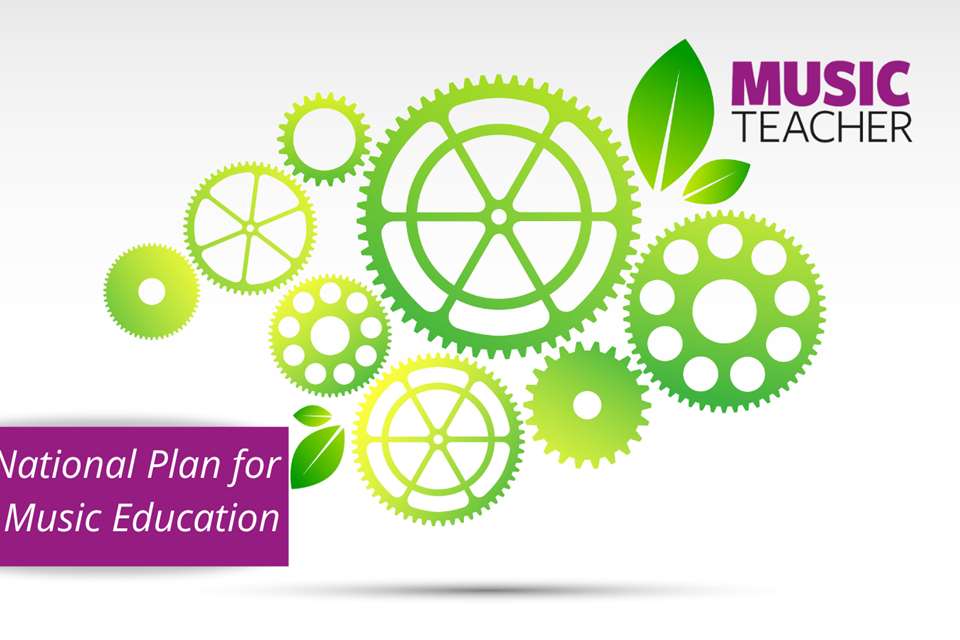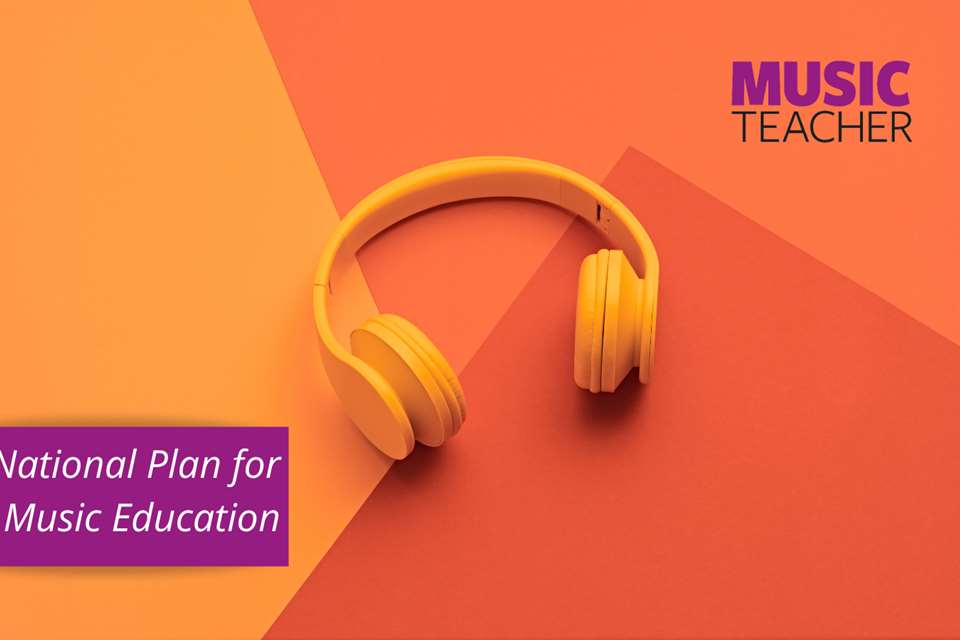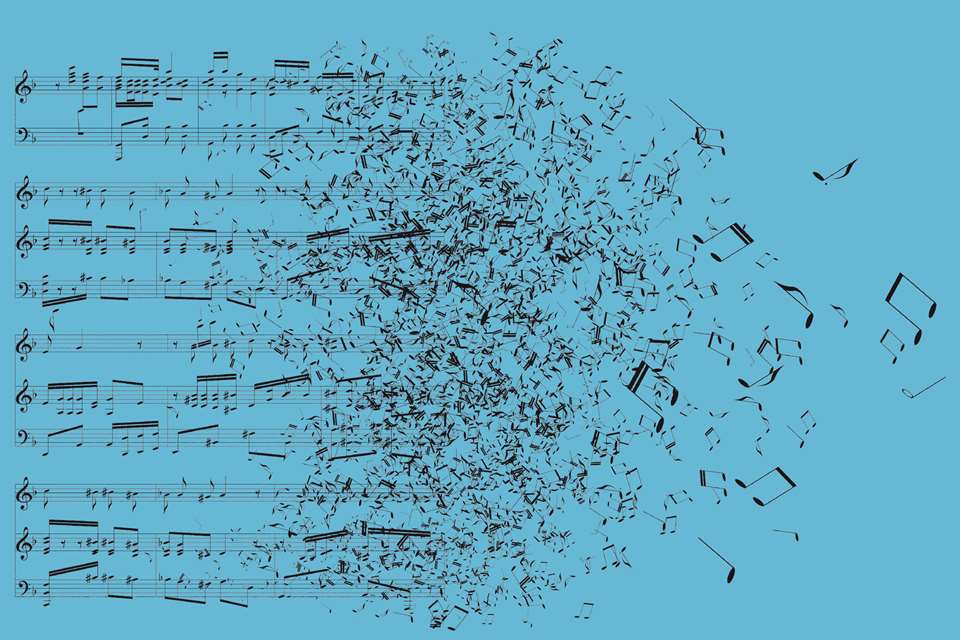NPME: Building a musical culture in a primary school – the nuts and bolts for success
Karen Marshall
Tuesday, June 28, 2022
As headteachers report feeling overwhelmed by the refreshed National Plan for Music Education, Karen Marshall provides practical, realistic, and tried-and-tested solutions to achieving the plan's aims in a primary school.
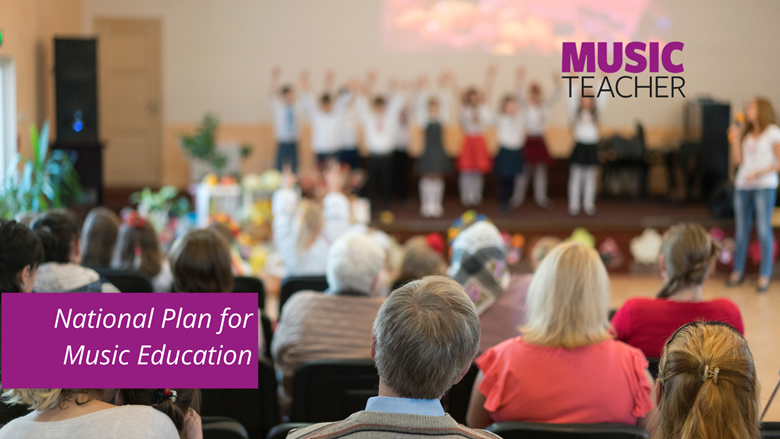
jollier_/Canva
On Saturday morning, like a number of colleagues, my eyes were glued to the long-awaited new National Plan for Music Education (NPME). More than 10 years on from the last plan, and following the trauma caused by the pandemic for the music education community, it was a much-anticipated publication.
When reading the pages, it took me back to 2014. I’m sat in a headteacher’s office at Osbaldwick Primary (a state school that was ‘Good with Outstanding features’ that had just merged with a failing school). She was setting out her vision for her new, enlarged school, and she wanted music at the heart of it. This headteacher (a non-musician) passionately explained how she believed she needed specialist music provision. She wanted a choir, an orchestra, all children to have lessons with a specialist and regular concerts with the best peripatetics (peris) in the city – and if I could make it happen, she would back me all the way. She left the school in 2019 (but thankfully is still in education working as a consultant for the trust). To my great relief, her equally visionary deputy head was appointed as the new headteacher.
Cultivating a culture of musical excellence
He has continued this culture of musical excellence and has helped me develop as an educator, particularly in terms of music technology and the use of Chromebooks. All the peri staff tell me how welcome they feel in the school, and regularly mention his conversations with them and even participation in lessons. His mantra is that the peri team are part of his school team. He regularly shows prospective parents around the school with pride, taking them to the music room packed with instruments that he and the previous head have purchased, and he outlines how 165 children are having weekly instrumental lessons (four instruments in whole-class ensemble from September and a vast range of instruments offered by peris).
This is on top of specialist provision in every class – even EYFS from three years, where a brilliant community musician works with nursery and reception. This individual is passionately supported by the deputy head and the early years and music lead. The school curriculum is progressive – songs sung in Key Stage 1 are then played on instruments in Key Stage 2, and so much more. Parents see on the wall the choir’s performances in school and local theatres.
Peri lessons are taking place as the head is briefly in the music room with the parents and the child having the lesson at the time (only he knows the lesson is funded by his Pupil Premium funds). They see the music stands stacked after the orchestra’s rehearsal the previous evening. He explains how they will be invited into school several times a year to concerts where the orchestra will play – he tells them about the latest event. And if it’s Tuesday afternoon as he moves towards the hall, beautiful singing voices get louder and louder. The children are singing in parts and are even choreographed. As the group of prospective parents walk in, they see all the children standing, singing enthusiastically in music assembly, along with the teachers and teaching assistants. He joins in singing and then congratulates the children and explains how their music making brings joy to his day. They smile with pride in response.
Eight years in the making
Not surprisingly, many parents enrol their children into this school. Sports provision is also superb, and his staff are kind and supportive to peri staff when they take children for lessons. Music has played its part in growing his school and his budget (looking at the bigger picture, especially with the falling birth rate). He knows, though, that this has taken eight years to produce and would take years to rebuild if he lost it. So, he gives music time and resource, despite it being tough to do so with all the other pressures he juggles.
This is done within a realistic budget and combined with PPA cover and parents’ contribution to clubs (modestly, for non-Pupil Premium children). Outside funding, bursaries and instrument donations are also creatively sought, and he personally attends meetings with the hub director to support his music lead and to gain their additional support in terms of instruments and funding. He builds ongoing relationships.
As this headteacher’s music lead, I know that we are one of the fortunate few schools that already has everything in place – apart from a small tweak, we will be able to deliver the entire National Plan for Music Education published on Saturday. Yet, for many schools (through no fault of their own), that will not be the case.
This report lands at a tough time for teachers at one of the busiest times of the year – as they try to fill vacancies, fit in Sports Day (weather permitting), finish reports, and finalise their budgets. Yet we must be positive. Hopefully, this article will provide some teachers and their headteachers a few possible solutions, as well as motivation.
Here are some pragmatic and creative ways to deliver the vision of the plan, based on my eight-year journey in a classic state primary school. Remember, though, Rome was not built in a day, and all this needs to be seen as a journey that is completed over time.
The new National Plan for Music Education key takeaways for primary schools include:
Building a musical culture in early years providers and schools, where music is valued.
This is arguably the most important concept in the document. Having leadership on board – especially the headteacher, supported by the Local Education Authority or Trust and governors – is the cornerstone of success. So, why make music a priority? The start of this article outlines the personal journey I’ve witnessed within my school, but here are more reasons that support the argument that music can help beyond the love of just doing it.
Headteachers, supported by their governing bodies, need to realise the wider benefits of music, which can include:
- Increasing the number of parents enrolling their children into the school.
- Providing a more vibrant, exciting curriculum offer where some children can shine (who may not in other subjects).
- Cultural capital – for example, some children have never ever attended a theatre, but in most cities, a school can take them to perform in one via a school choir.
- We currently have a crisis in the mental health of our children. Learning an instrument and singing in a choir are good for mental health and can provide confidence that can be transferred into other areas of the curriculum and wider life. Singing can calm. Playing an instrument can sooth.
- Concert opportunities bring parents into school to see their child perform, providing a valuable opportunity to see school displays and children’s work, talk to other parents, and for staff to interact with them.
- SEND – music can often be a subject that children with disabilities can enjoy and thrive in.
- Community and friendship generating – a school choir or orchestra/ensemble can become additional smaller communities within a school, where children can gain a sense of belonging and experience success in a team.
- Links with the wider community – local nursing homes are wonderful places for school choirs and ensembles to perform, or in the school if residents are able to attend.
- Music supports other areas of the curriculum. In particular, early reading – through traditional rhyme, pulse and rhythm work, concentration, general listening skills, and resilience.
Part of this culture also means that peri staff feel welcome in school. Some staff have struggled to stay in schools when they haven’t felt part of the team or facilities are not the best. This was much compounded by Covid. With a national shortage of instrumental teachers brewing, schools would be wise to try to integrate peri staff a little more, being creative about rooms. Our headteacher had room shortages for a few months, so gave up his office to the bassoon teacher to teach one student!
At least one hour of high-quality music provision weekly.
Within our school setting, most curriculum music lessons last 45 minutes (30 minutes for younger children), but everyone attends a weekly 30-minute whole school music assembly. This takes the provision to at least one hour before choir, orchestra and peri lessons are counted. Plans for September include Sing Up being available in every classroom, and teachers encouraged to sing in class too.
At Key Stage 2, student music leaders will soon be put in place (all experienced choir members). They could potentially lead the five-minute session, supported by the class teacher. To help with budgets, schools can use a music specialist’s time to cover PPA or use class teachers to do interventions for children in other classes while a specialist delivers in their own class, using Covid catch-up money to fund the music specialist.
A designated music lead, and ideally a music specialist delivering lessons.
The vast majority of schools have appointed music leads (with varying expertise), as it is a foundation subject. However, music specialists are still very rare in most schools. Previously, the Department for Education (DfE) moved away from music specialists in schools, expecting classroom teachers to deliver the subject. Perhaps after Covid, with teachers having 11 foundation subjects to deliver and music being a particularly tricky one, removing some of their load might be a wise move?
A music specialist will be able to perform musical instruments live to children, which in turn will motivate them to want to play an instrument and potentially have lessons in school. A music specialist is likely to have experience in concert programme development and organisation (the plan is asking for three a year!), plus the contacts to bring in peri staff, the expertise to run a choir and ensemble (which again the plan suggests), and so much beyond. The Model Music Curriculum (MMC) is, quite frankly, beyond virtually all non-music specialists (even though many are brilliant) at Key Stage 2 and only possible, in my opinion, in Key Stage 1 with significant CPD, probably including weekly music lessons with a tutor themselves. Bringing a specialist in is a good move to meet much of the plan’s demands and to not create too much stress for a less experienced music lead, who is likely also to be juggling a class.
Where do you find music specialists? QTS music specialists are rare, but there are more whole-class ensemble teachers available via music hubs who can easily deliver curriculum music. There are teachers who work as or have worked as unqualified music specialist teachers (but they are qualified music educators). Even though the top of the scale of the unqualified teachers’ scale is £28,735 (outside London), significantly less than the top of the scale of a QTS teacher, schools can compensate for this through giving additional allowances and paying for PPA time rather than including it in the school day. State-employed teachers also enjoy a double-digit contribution into their pension and have holiday pay. School leaders can increase capacity by music leads finding peri staff that could potentially deliver curriculum music in school and mentor them to do so.
Other recommendations in the report with brief solutions (to be expanded upon):
- Singing should be a core element in the provision, with daily singing and singing assemblies considered. (This can be gradually implemented over time and online resources such as Sing Up, Music Express and even YouTube can help enormously.)
- Produce and implement a high-quality music curriculum by adopting the Model Music Curriculum (2021) or implementing a curriculum that is at least comparable in breadth and ambition. (Music hubs are being tasked with helping schools with this where specialist provision isn’t available yet. Get in touch.)
- Write and publish a ‘Music Development Plan’ by September 2023 at the latest: including curriculum, co-curricular and enrichment (include EFYS, SEND & diversity); staffing and budgets. Link with school and trust development plans. (This should be highlighted to school leaders as a matter of urgency. Watch out for an example plan provided by MT in due course.)
- Work in partnership with the local music hub and their providers. (Most schools do this – if you don’t have a very proactive hub then the Arts Council are making hubs more accountable to help schools through strategic changes).
Extra-curricular music opportunities including:
- Access to instrumental lessons across a range of instruments and voice. Whole class instrumental teaching (ideally one year) and individual or small group peri lessons. NB. Lessons including peri one-to-one/small groups lessons should be within the school day. (Contact your music hub for help here to make teachers available to you if you don’t have any.)
- A school choir and/or vocal ensemble. (Try your hub, or if you can, pay a self-employed teacher and charge this back to the parents (if they have the means). It can work out being as a little as £1 per child per week if you get the numbers. Smaller schools should consider forming a choir with a school near them.)
- A school ensemble (such as an orchestra), band or group. (Try your hub first or see if one of your peri staff will do this self-employed and charge back to the parents as above.)
- Space for rehearsals and individual practice. (Can you make any rooms like the library or other spaces dual purpose with clever timetabling?)
- A termly school performance. (Most schools already do an end-of-year play and a nativity. Build on these first.)
- Opportunity to enjoy live performance at least once a year. (Could this firstly be provided by your feeder secondary as part of transition? Do parents have musician friends who could perform, or perform themselves?)
- Schools to highlight progression opportunities to access ensembles in the wider community provided by the music hub and their partners. (Get your music hub to provide these and do check out the Arts Council Music Education posters.)
Concluding thoughts
In September, I will be joining a new school, Lakeside Primary, as their music lead and class music teacher. As I’ve sat with this new headteacher, I have yet again been inspired by the vision of this leader. She wants music for the children in her school and has found the budget to fund me and get the instruments I need, plus a Sing Up subscription. She’s given me extra supply days to get the curriculum and wider offer ready for September. Her governing body are right behind her, as are her staff – I’ve been made to feel so welcome in the staffroom. When meeting with the music hub, she was by my side supporting me. When I mention new initiatives, she glows with excitement.
I’m working hard for her – beyond my contract – and why wouldn’t I? Because this is a headteacher who, like my current head, understands the value of music and is making it happen in her school. Music in a primary school can be life changing for the child but also it can be so much more than just music.
So, if you are a headteacher reading this article, feeling overwhelmed by the demands of this plan, please don’t be disheartened. Where there is a will there is a way. View this as a journey over time. The benefits to your school, and most importantly the children within it, will far exceed your expectations. Be courageous and take that leap. Find the right people to help you. Ensure your hub gives you the support you deserve and join the music education cause today. You won’t regret it.


